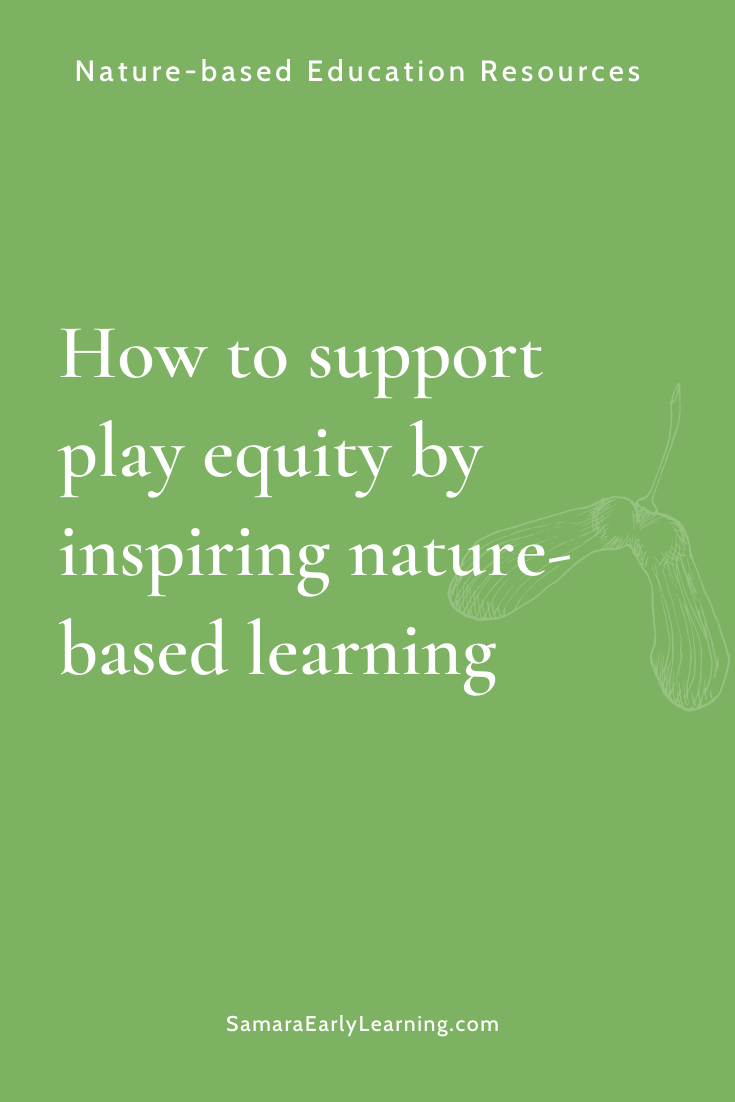Freebies!
Free resources related to nature-based early childhood education

Reimagining the Roles of Nature-based Teachers
In this webinar, Drs. Rachel Larimore and Claire Warden discuss the many roles that nature-based educators play in implementing nature-based pedagogy in the early years.

The Outdoor Classrooms podcast: Interview with Dr. Rachel Larimore & Dr. Claire Warden
In this podcast, the host of Outdoor Classrooms speaks with Dr. Rachel A. Larimore & Dr. Claire Warden to explore their groundbreaking perspectives on weaving nature into educational practices to spark curiosity and engagement.

We’re in it together—Team teaching in early childhood
Every single adult in any classroom matters. They impact the children, the other adults, and interactions with families. Everyone matters.

Experiences rather than activties
An "activity” is a very teacher-led, scripted interaction with a clear structure and intended outcome. Whereas an "experience" is an event or occurrence which leaves an impression on someone.

Child-led play
One goal of nature-based early childhood education is to support children’s holistic development. The way we do this is by emphasizing two key elements of early childhood education: 1) Play-based and 2) Child-led.

Whining or communicating a need?
There are times where young children may sound like they’re whining, but they’re really communicating a need. It’s our job as nature-based early childhood teachers to figure out what it is they need.

So Much More Than A Cute Kid Story
At first glance this may seem like just a cute kid story. We have lots of cute kid stories in our work, don’t we? But like with almost every cute story…there’s real depth to notice.

Surviving Re-entry
After a break, it’s hard for us to get back into the normal routine. It’s no different for young children.

Wonder walks & sit spots
Mindfulness. It’s a term that seems to be growing in popularity, but what is it? And does it have a place in nature-based early childhood education? Two strategies that bring mindfulness into our nature-based classrooms are Wonder Walks and Sit Spots.

Your place matters
Despite so much being universal, place is vital to our work in nature-based early childhood education. It’s universal that our programs connect to nature, but the plants, animals, and culture of our place are unique.

Never wonder where your sense of wonder went
Maybe nature-based education ensures that we as teachers will hold onto our own sense of wonder. Our sense of wonder in nature. Our sense of wonder in children.

Routines & rituals
Rituals are about connection between people through eye contact, appropriate touch, presence, and playfulness. What if we intentionally worked to make our routines a time for connection?

Saying goodbye
As the end of the school year is approaching, children, families, and teachers will be saying goodbye to routines and communities they’re accustomed to and starting anew.

Connecting to place
One of the core principles of nature-based education is connecting children to local, authentic nature. This means connecting them to the nature found in their place in the world.

Reflection: The powerful teaching of a deer carcass
In this article, Dr. Rachel Larimore discusses how nature-based approaches sometimes provide opportunities to address deeper life issues such as the concepts of life, death, and care for others.

What does it remind you of?
This simple question also requires higher order thinking to compare, contrast, and connect to children’s prior experience. This also honors their culture and identity in the learning process.

Seeing the whole picture
In this article, Rachel discusses the importance of supporting the whole child and taking a wide enough view to address the root cause of behavior challenges.

Supporting play equity by inspiring nature-based learning
In this video, originally recorded for Kaplan Early Learning’s Facebook Live event, Dr. Rachel A. Larimore discusses diversity, equity, and inclusion in nature-based settings.

Inclusion & accessibility in nature-based schools: An interview with Dr. Larimore & Outside OT
In this interview, Dr. Rachel Larimore answers questions related to inclusion and accessibility in nature-based schools, and gives suggestions for supporting children with disabilities in your program.

Preschool Beyond Walls: Integrating nature into the preschool classroom
This recorded edWebinar, presented by Dr. Rachel Larimore, helps early childhood providers consider the principles fundamental to a nature-based approach and integrate those principles into teaching practice.
